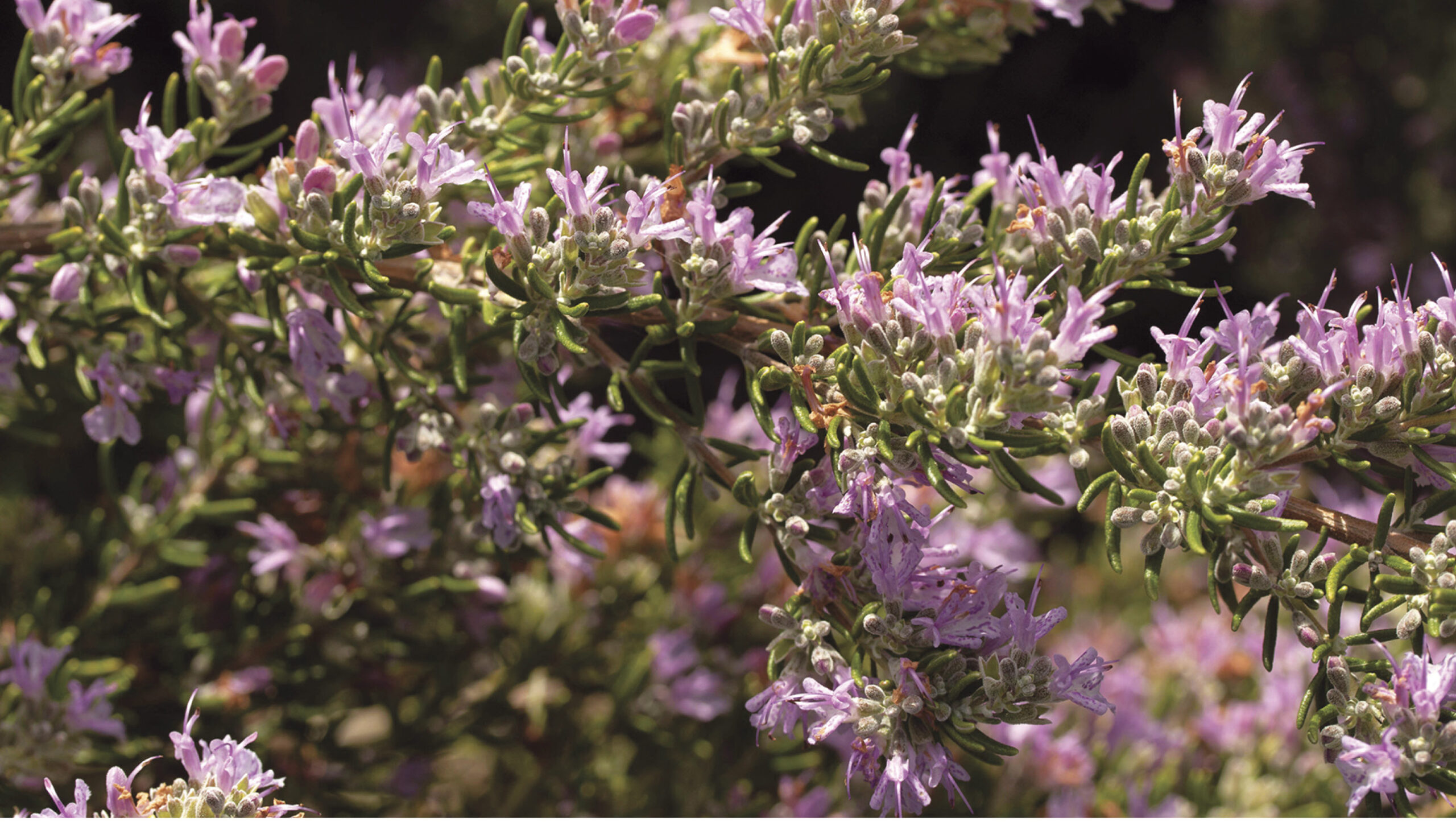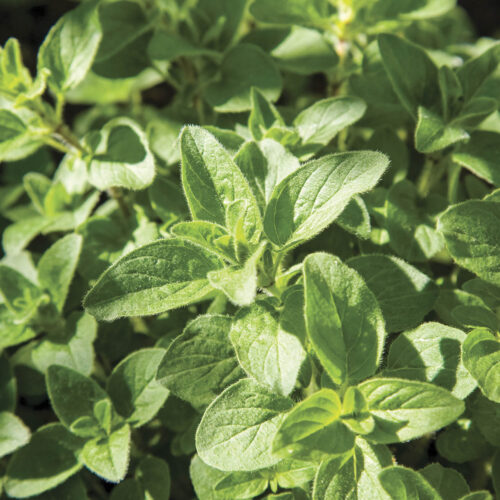Growing rosemary
2021-10-12T00:38:18+11:00
Rosemary attracts birds, flowers in winter, is a great addition to roasts and lifts the spirit if drunk as a tea.
Rosemary is an incredibly versatile and beautiful plant. It attracts birds and insects, flowers in winter, lifts the spirits if drunk as a tea, flavours your favourite meal, and more.
Growing
Rosemary is a versatile, tough, adaptable and beautiful plant. It flowers over long periods at different times of year, depending on the cultivar. I really value the winter flowering forms when not much else is in flower. Native and honey bees, as well as a myriad of other insects, including butterflies, love the flowers for their nectar and pollen. As do the nectar-eating birds. Rosemary also has numerous culinary and medicinal uses.
It grows well in most climate regions but tends to suffer in high humidity, so in these places grow it in a pot and move it under cover during wetter times, or treat it as an annual and only grow from autumn to early spring during the dry season. In more temperate regions, rosemary is tolerant of drought and mild frosts. It also grows well near the sea.
Rosemary is best grown from cuttings taken in spring or summer but there are also more than 20 different cultivars that can be purchased from online mail order suppliers in pots. While rosemary is easy to grow, it will only thrive when planted in a semi- to full sun position with a slightly alkaline soil, and it must have really good drainage. Prune regularly after the first two years.
The prostrate and dwarf cultivars are excellent for rockeries, hanging baskets, hanging over walls or planting at the base of trees in bigger pots. Bigger shrubs make perfect low hedges. Harvest rosemary whenever it’s needed. Regular harvesting or tip pruning ensures good shape and vigorous new growth. Hedges need to be pruned to maintain shape.

In the kitchen
Some rosemaries are better than others for flavouring food, but all are able to be used. Those with a pure rosemary scent and flavour, with fewer pine or camphor overtones, are best. ‘Chef’s Choice’, ‘Tuscan Blue’ and ‘Gorza’ are reliably well flavoured, but there can be variability even within cultivars, so smell before you buy if it’s important for your cooking.
I always use rosemary fresh if I can. Traditionally, it is used in stuffings to flavour red meat, but it’s delicious cooked with chicken, duck, game, pork and oily fish. Add it finely chopped to salads, or drop a sprig into soups and casseroles. Combine it with vegetables such as roast potatoes or mushrooms, add a sprig when you cook peas, or sprinkle finely chopped leaves over spinach. Finally, try adding leaves to bread and savoury scone mixes.
Medicinal uses
Rosemary has a long list of medicinal uses. As a starting point, it contains provitamin A, and the B vitamins 1, 2, 3, 6 and 9 as well as vitamin C and calcium, magnesium and zinc. It also contains a number of important phytochemicals, including carnosol and rosmarinic acid which are both strong antioxidants. So just having it as a regular part of your diet is beneficial to your health.
Drinking rosemary tea has a number of benefits:
- Sweetens the breath.
- Can be used as a tonic for the circulatory system.
- Helps ease the symptoms of colds or flu.
- Lifts the spirits, lessens tension and can help alleviate mild depression.
- Eases indigestion and flatulence, as well as headaches and migraine.
- Stimulates blood flow to the brain and improves memory and concentration.
When I’m working late at night I drink rosemary tea instead of coffee: it helps me stay alert but doesn’t stop me from sleeping when I finally get to bed.
Rosemary oil, made by infusing leaves in oil, can be used as a rub for sore muscles, sciatica and neuralgia. You can also rub it into the scalp and hair before washing to promote hair growth, add gloss and lessen dandruff.
For more information:
Penny loves her herbs and spices, and often writes about them for OG:







